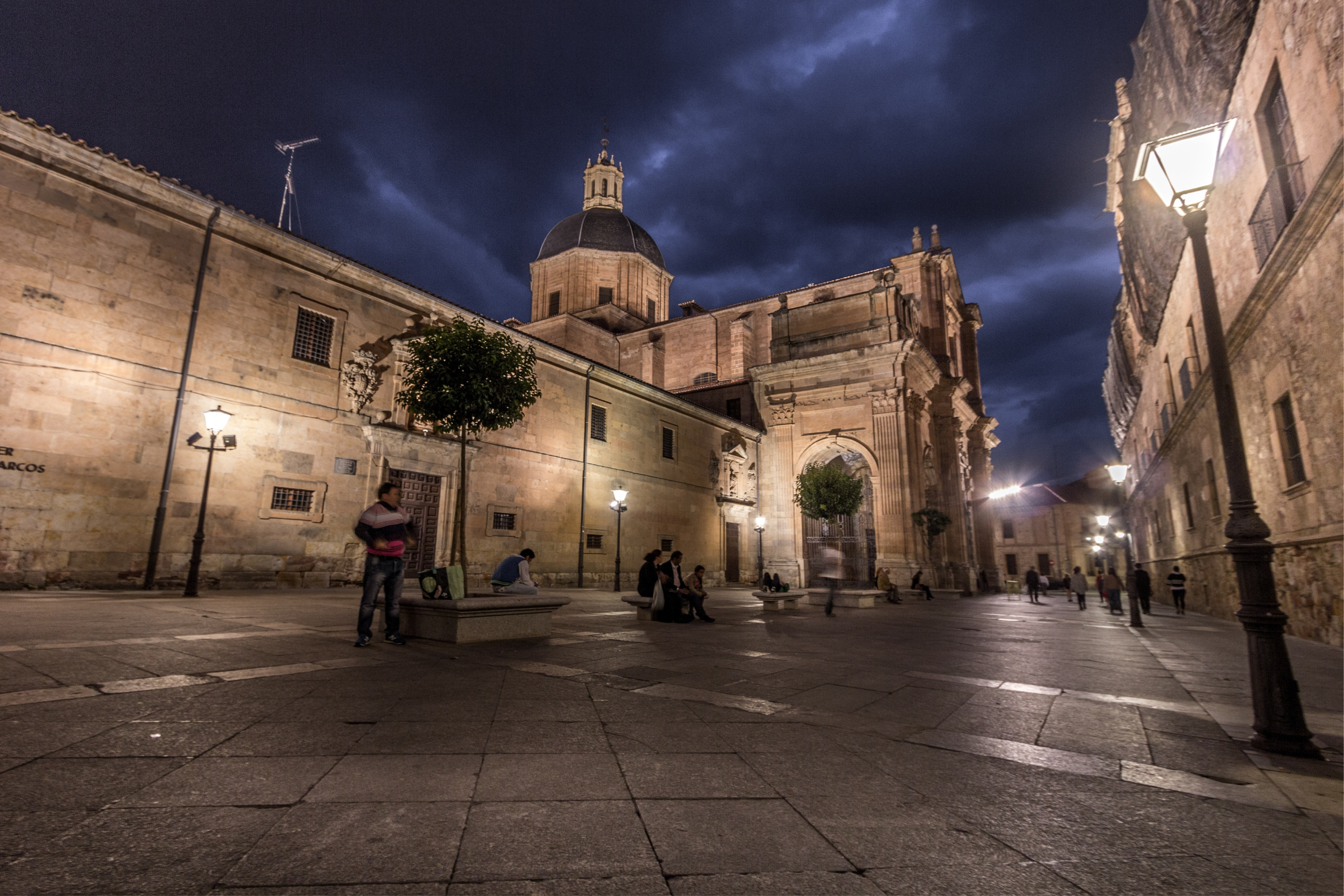Salamanca, declarada Patrimonio de la Humanidad por la UNESCO, y conocida como “La ciudad dorada” está ubicada en la comunidad autónoma de Castilla y León.
Gran parte de su vitalidad y esencia recae sobre la cantidad de estudiantes que residen en ella y que vienen para realizar sus estudios universitarios. Cabe destacar que se encuentra la universidad más antigua de España fundada en 1218.
A lo largo de su historia han pasado por ella grandes personalidades como Miguel de Unamuno, fray Luis de León, Fernando de Rojas… entre otros.
Sin duda es una ciudad repleta de historia y cultura, así como de monumentalidad.
Mi nombre es Cristina y como estudiante de Agencia de Viajes y Gestión de Eventos, y con la gran oportunidad de poder estar realizando las prácticas en el Palacio de Congresos y Exposiciones de Salamanca, he tenido la suerte de poder participar como turista en visitas guiadas, y acceder a los lugares culturales más trascendentales de la ciudad, pero…¡también vosotros os vendréis conmigo a través de la lectura!
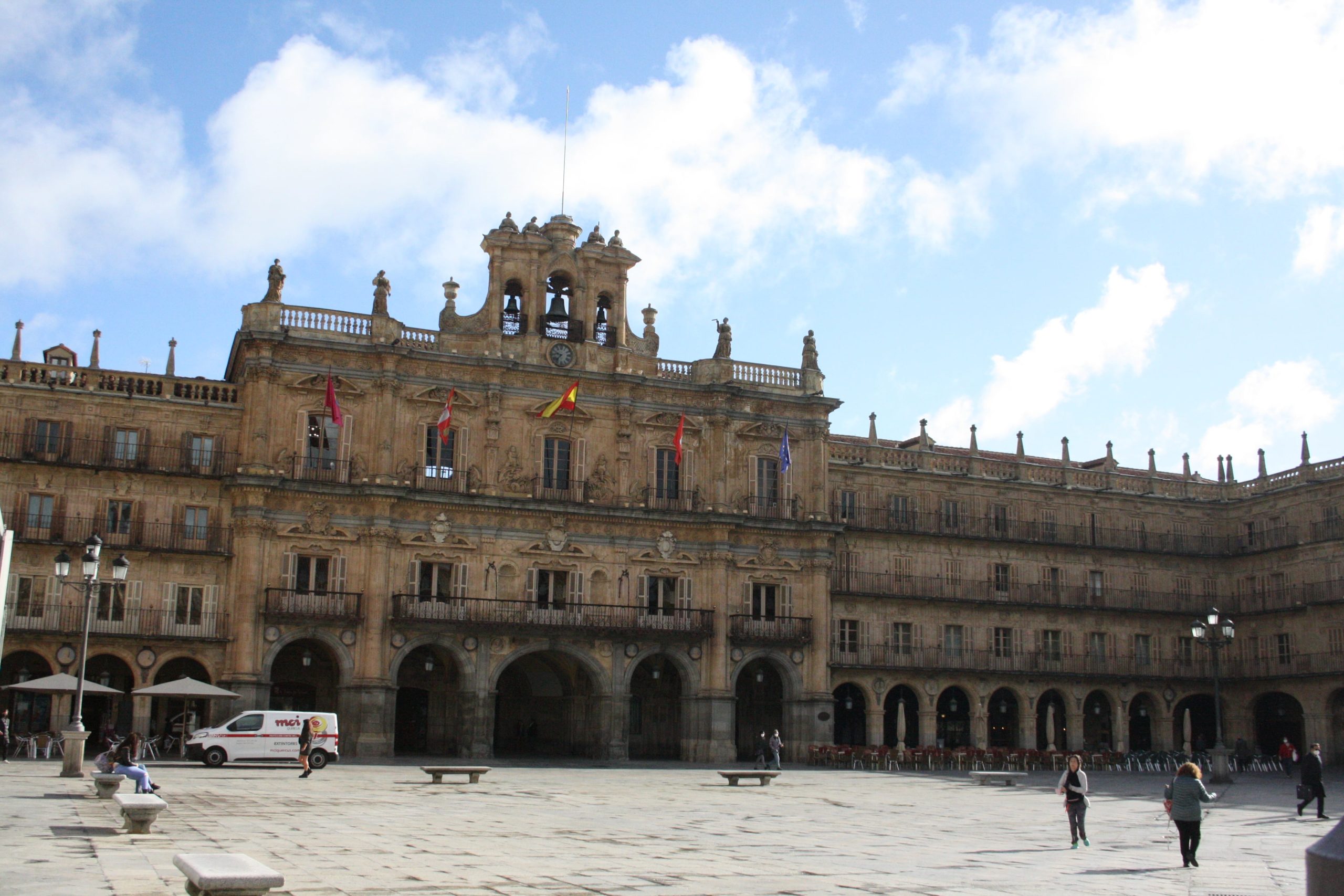
Mi tour por Salamanca comienza conociendo la historia del “Paseo de las Órdenes Militares” con la idea de darnos a conocer su evolución histórica y urbanística con itinerario por la Plaza Mayor, sin duda, el gran símbolo de la ciudad diseñada por Alberto Churriguera de estilo barroco. Su decoración incluye medallones con rostros de personajes históricos.
Aunque parezca cuadrada, no lo es, y como dijo Miguel de Unamuno ¨es un cuadrilátero irregular, pero asombrosamente armónico¨.
Cuenta con 88 arcos y en la fachada del Ayuntamiento se encuentran cuatro esculturas que son alegorías de la Agricultura, Comercio, Industria y Geografía y también tres campanas en lo alto. Su arquitectura es bastante compleja y merece mucha más descripción, pero estos son algunos de los detalles que más me han llamado la atención.
Está llena de terrazas y restaurantes, por lo que casi siempre tiene mucho ambiente, así que comer, cenar o simplemente tomar algo, es una buena opción para admirar la plaza, que además la luz reflejada en ella es mágica en cualquier momento del día…especialmente mi momento favorito es el atardecer
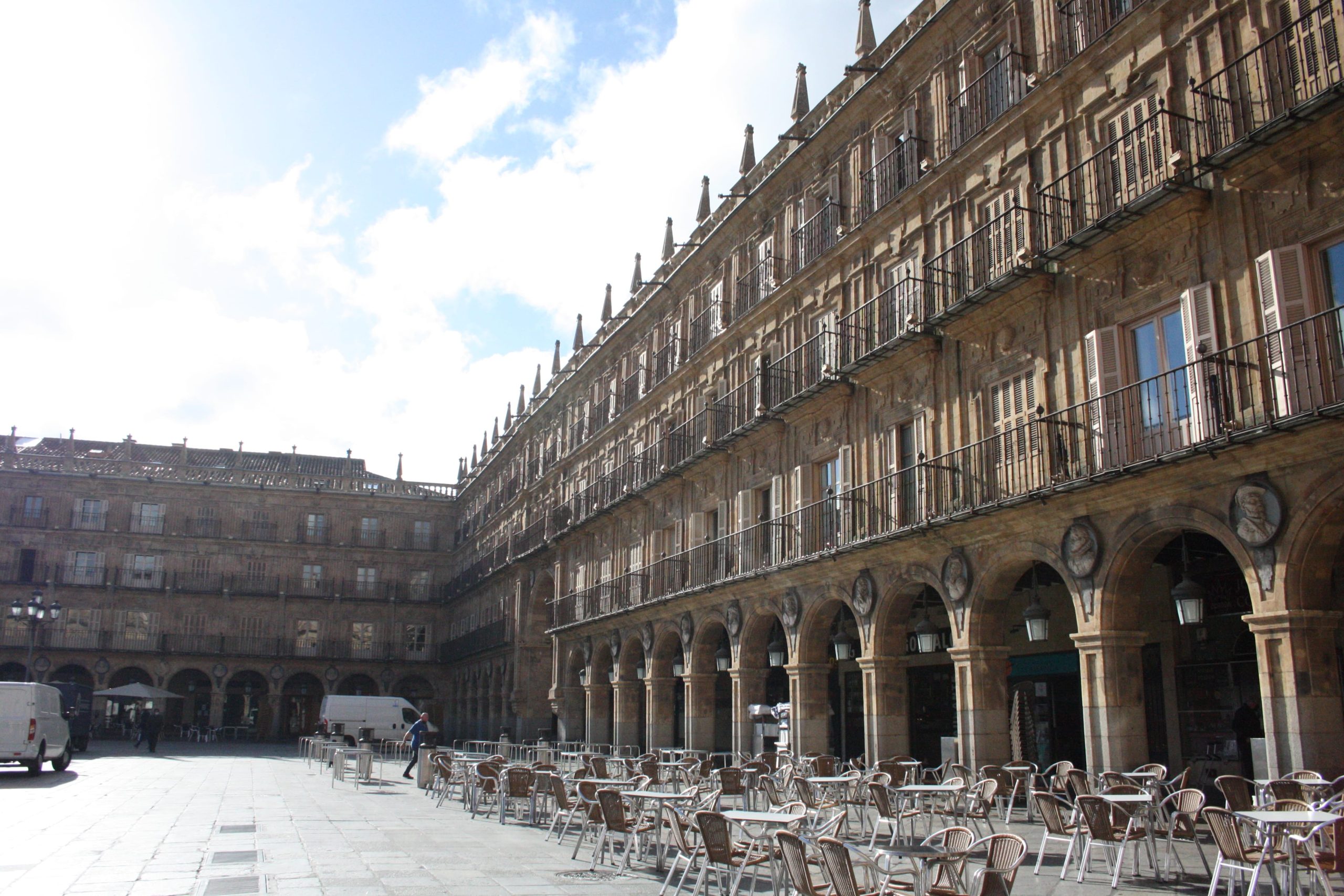
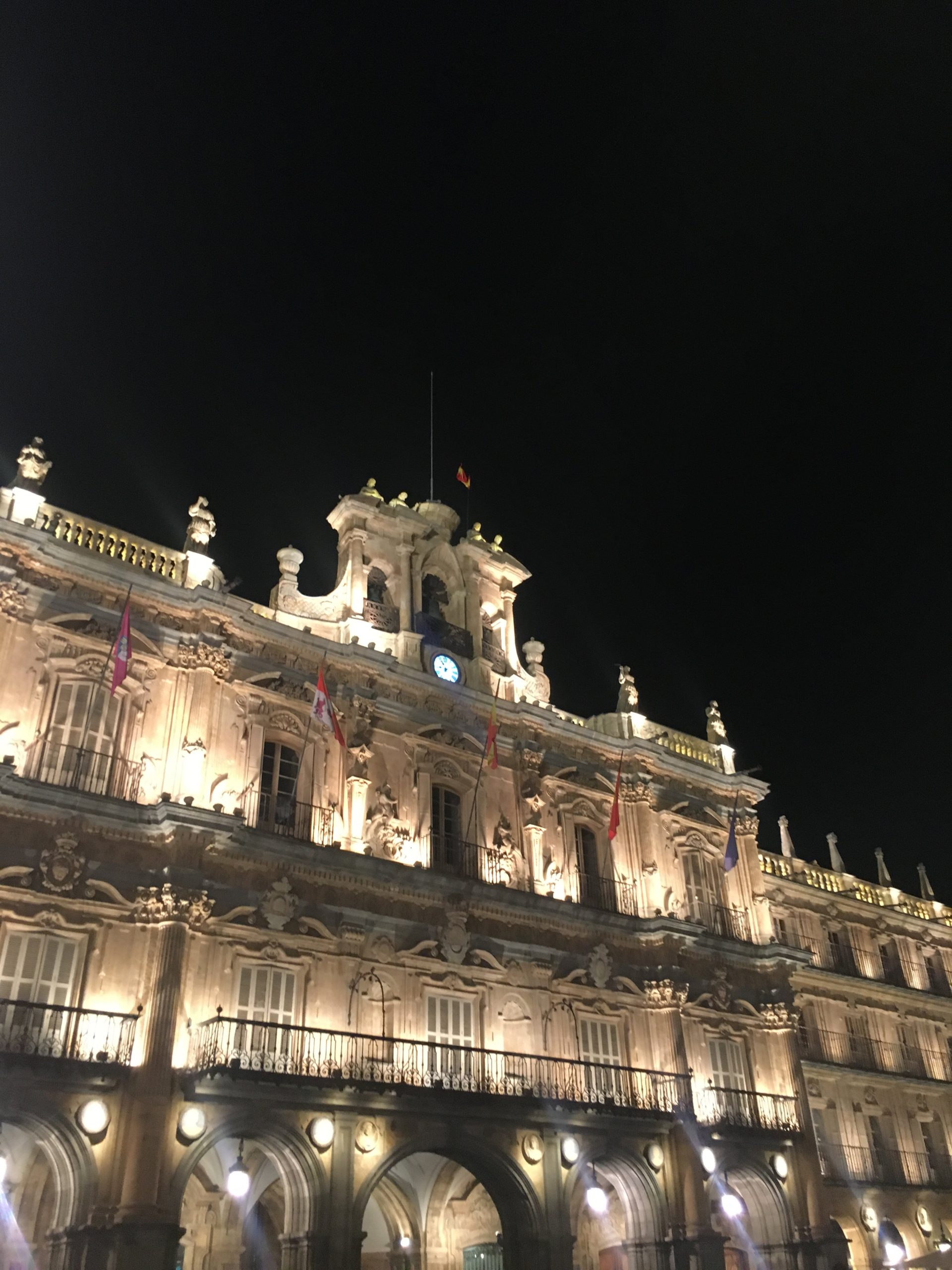
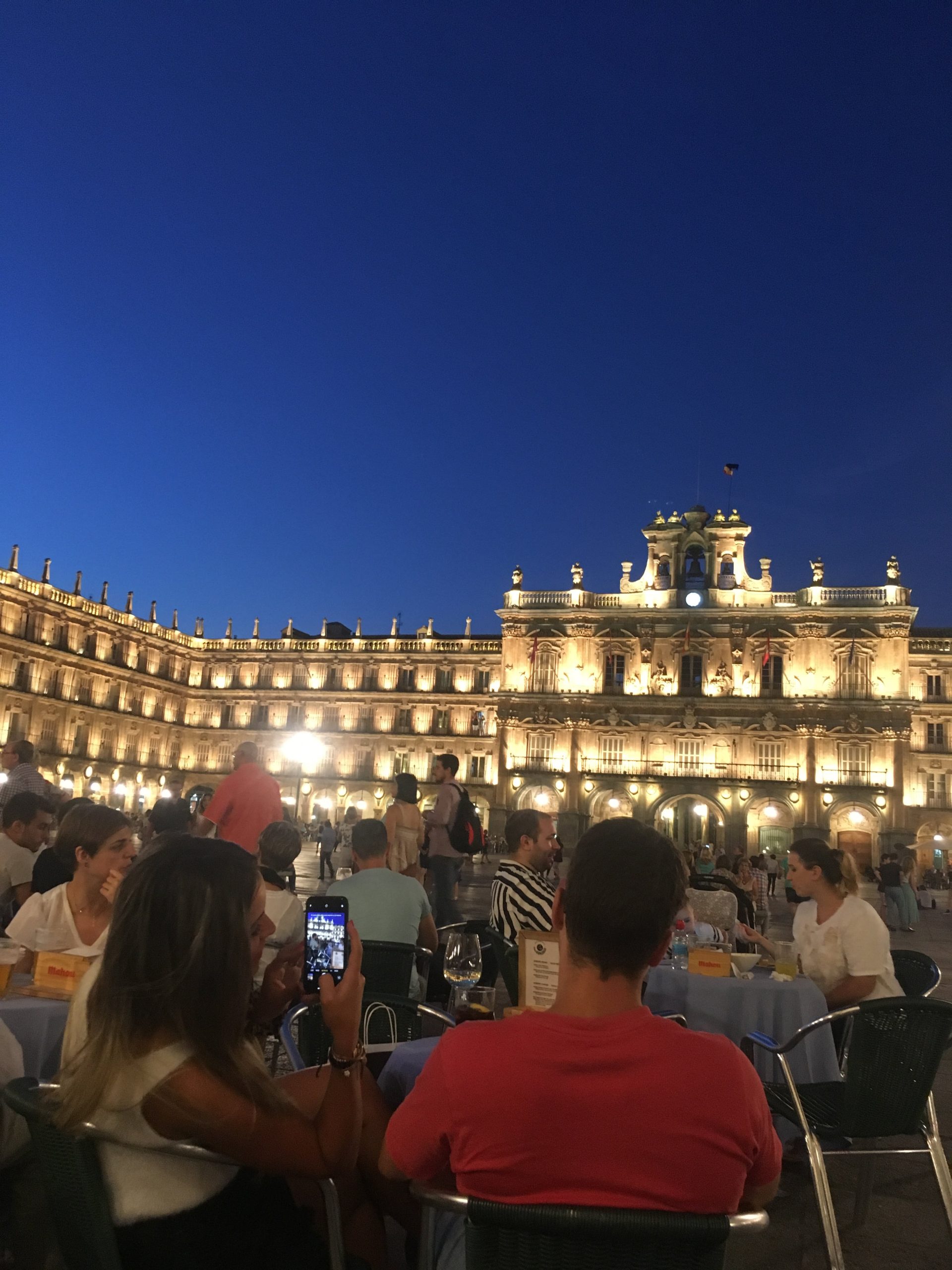
Seguimos caminando hacia la Iglesia de San Julián, un poco escondida y principalmente románica. A unos pocos minutos está la Iglesia de Sancti Spíritus, (después de subir una enorme cuesta que pone a prueba tu forma física ¡jaja!) Es de estructura gótica con decoración plateresca. En su interior pudimos observar el coro y la capilla con un artesonado mudéjar de los siglos XV Y XVI, el Cristo de los Milagros, y el retablo mayor. Dentro aprovechamos y nos hicimos una foto para las redes sociales de la Oficina de Turismo de Salamanca.
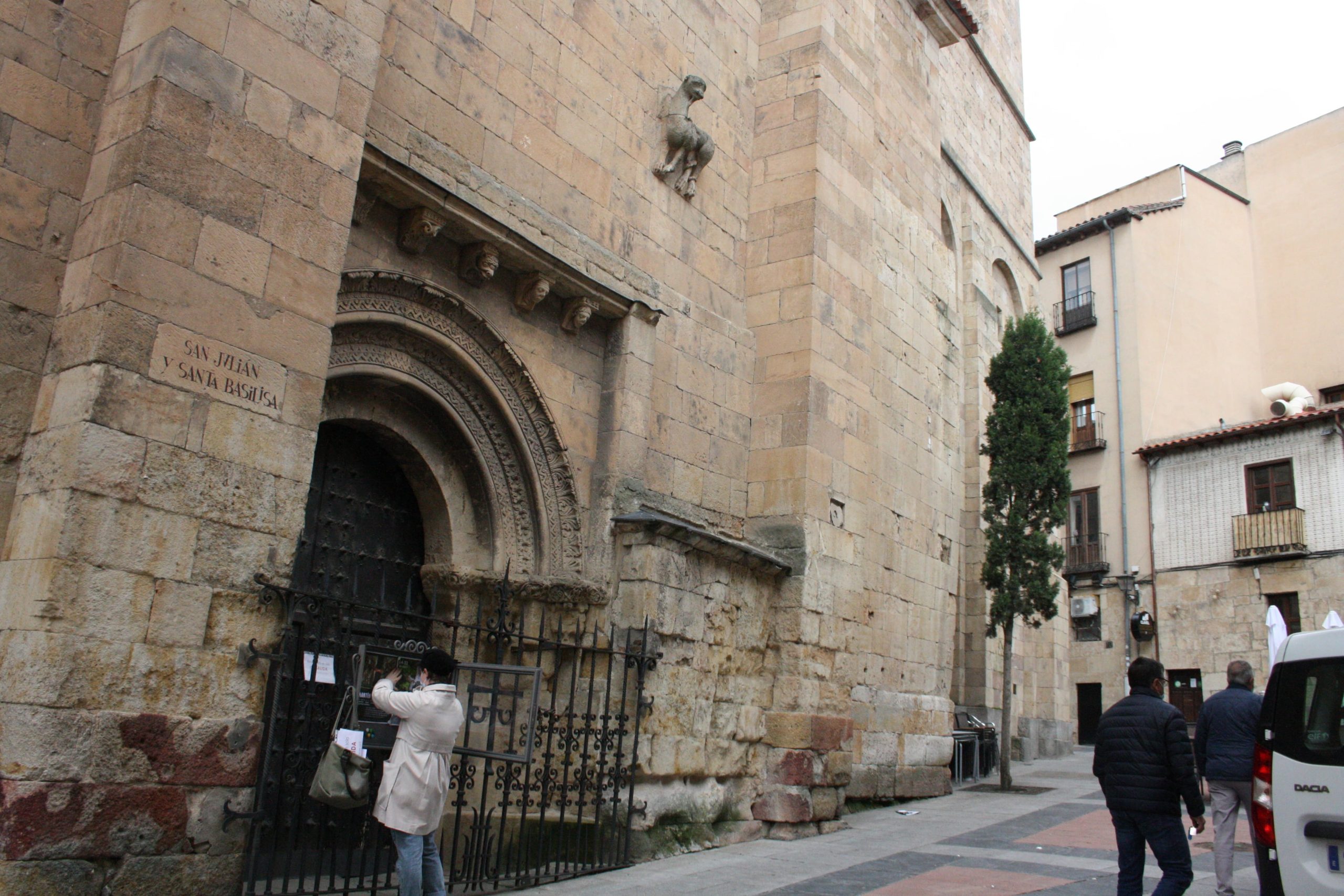
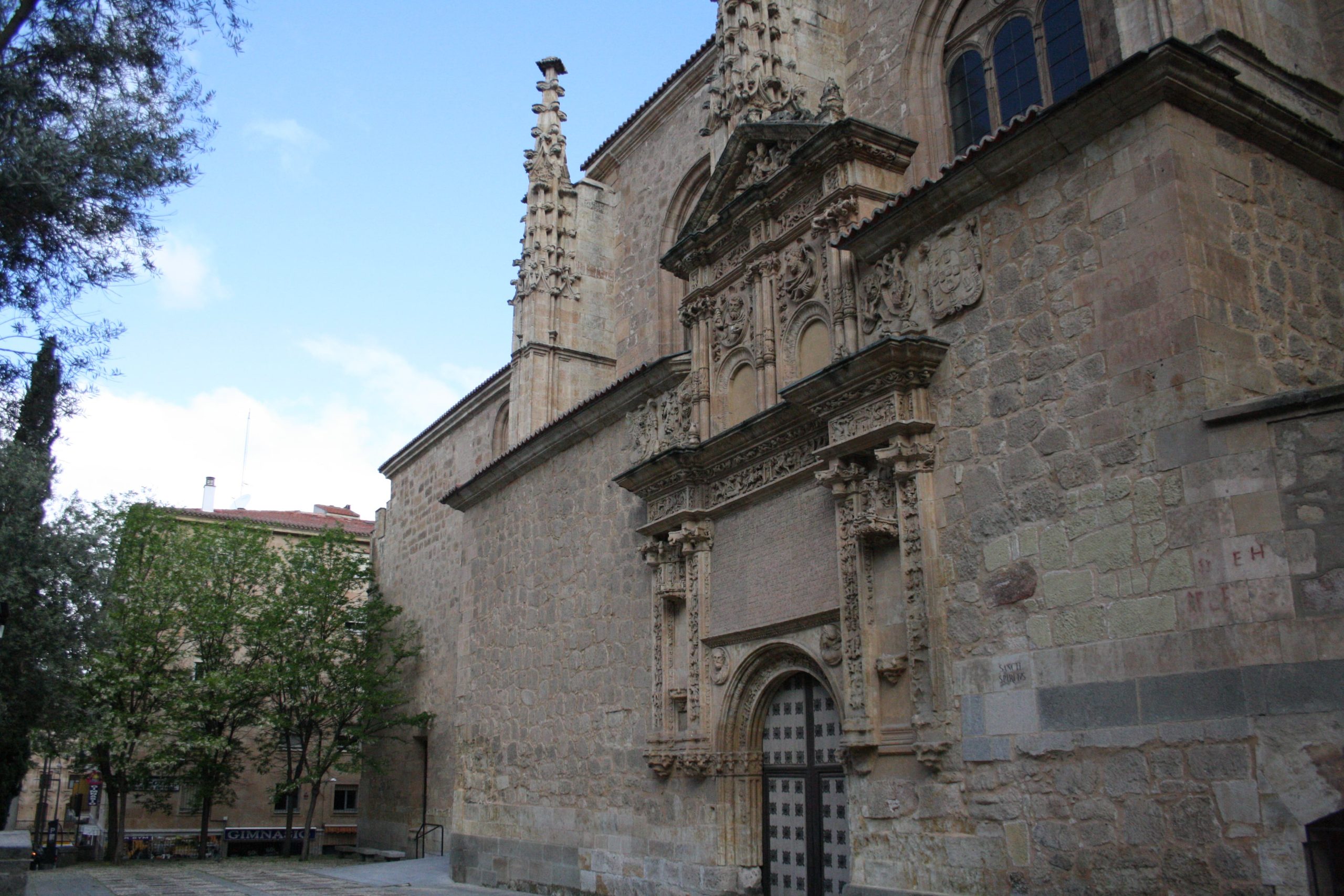
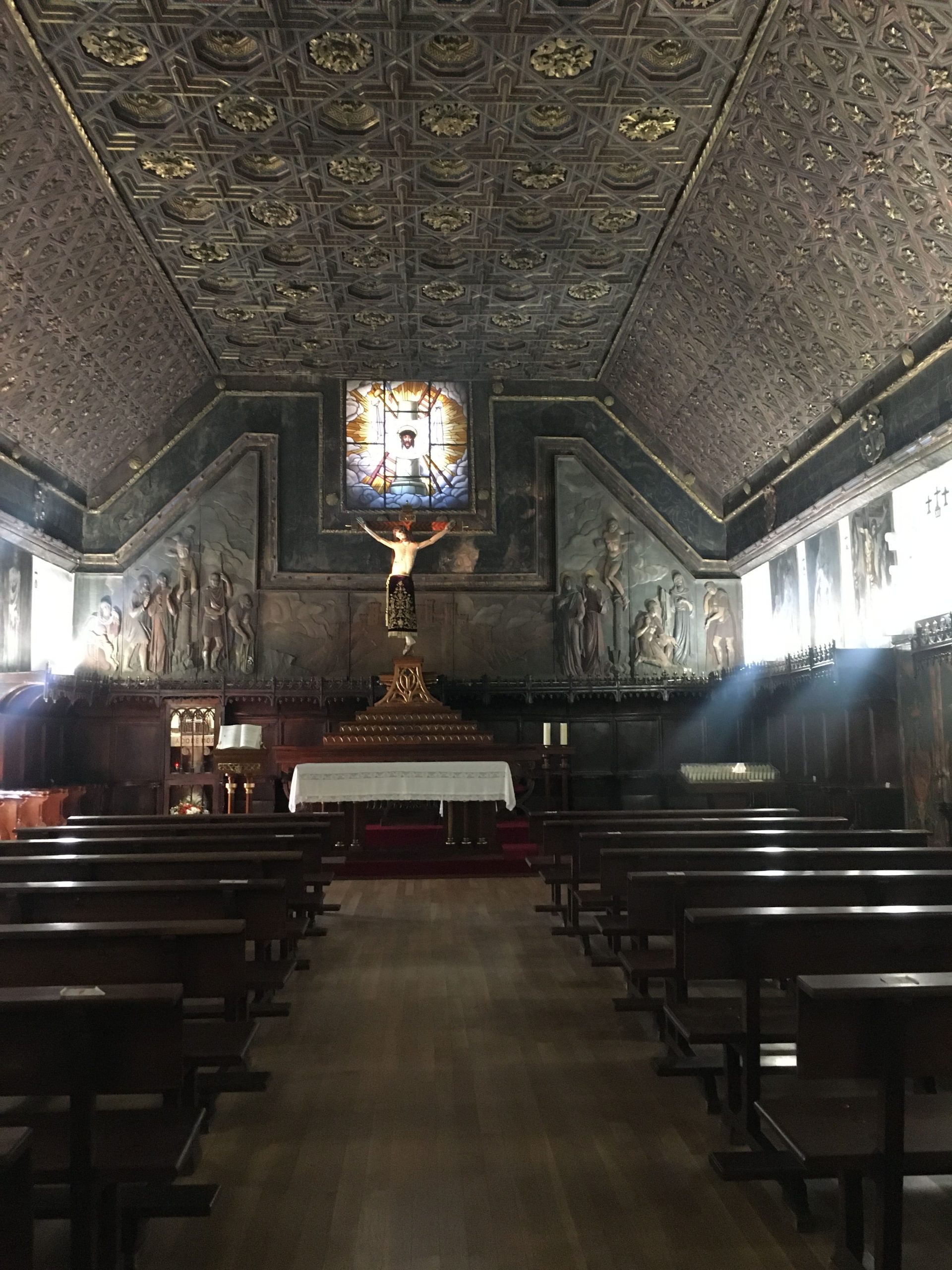
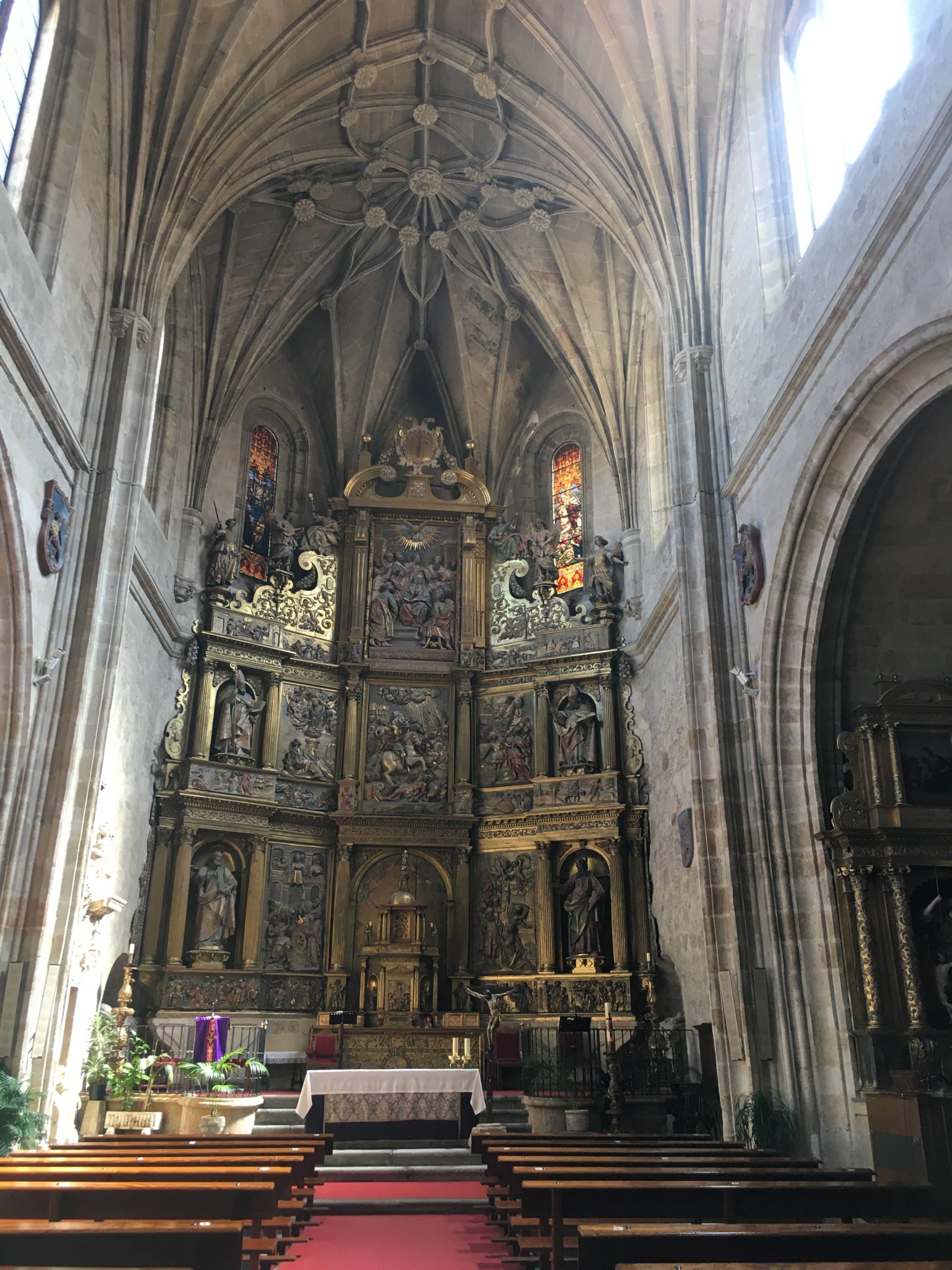
Continuamos hacia la Iglesia de San Cristóbal observándola únicamente por fuera.
En la explicación de su historia me sorprendieron dos curiosidades de esta bonita iglesia románica. Enfrente se encuentra la estatua de San Cristóbal, el patrón de los transportistas, cuya leyenda cuenta el magnífico hecho que hizo al transportar a Cristo de un lado para otro del río.
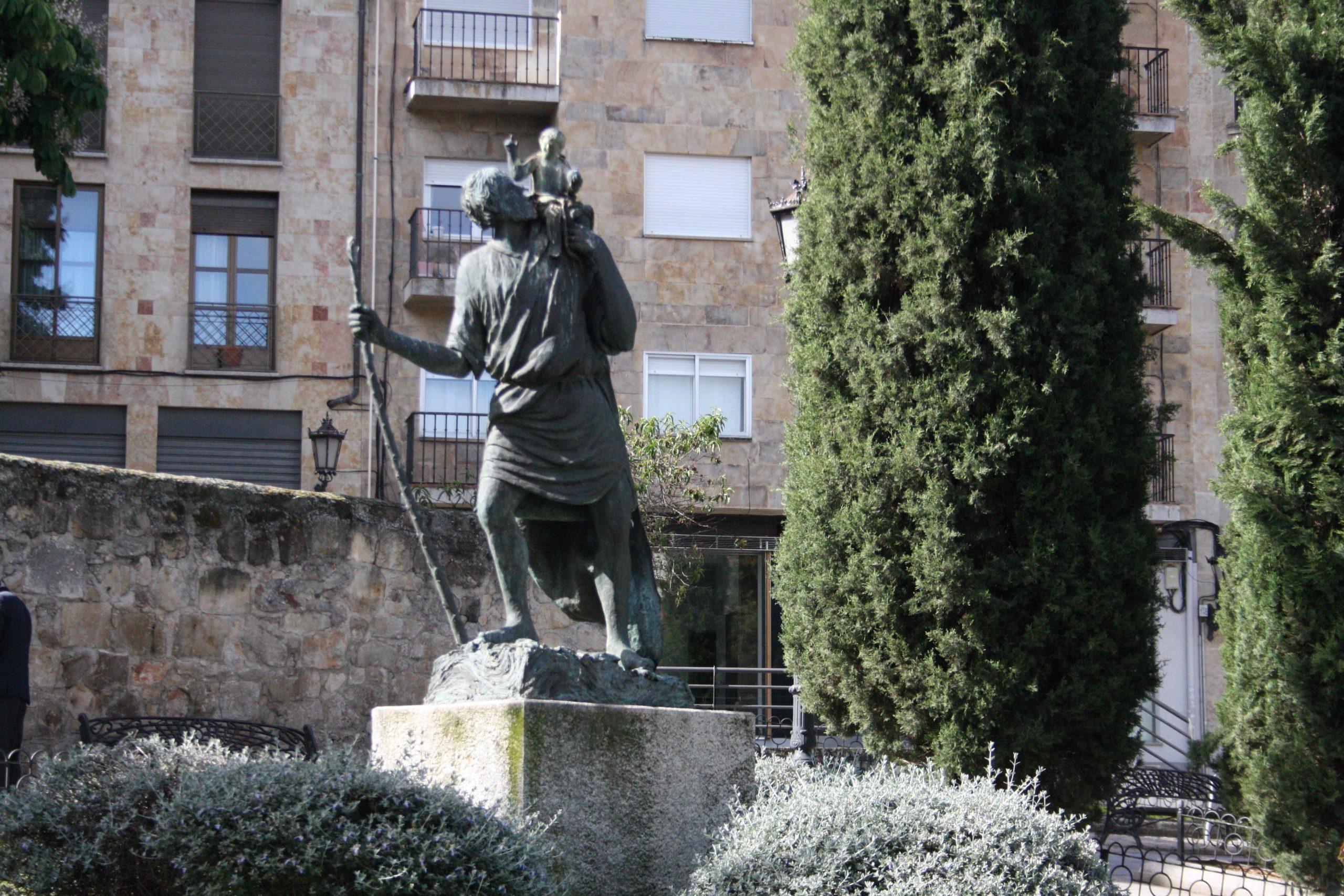
Al borde de ella se encuentran templos donde se enterraba a la gente antiguamente. Si se pasa por ahí parece que son simples piedras, pero esconden mucho más que eso…
Pasamos por la bonita Torre del Clavero, fortaleza militar del siglo XV, nos adentramos entre callejuelas y llegamos a la Iglesia de Santo Tomás Canturiense, románica del siglo XII, vista por fuera también y finalizamos delante del Colegio de Calatrava, sede de la Casa de la Iglesia.
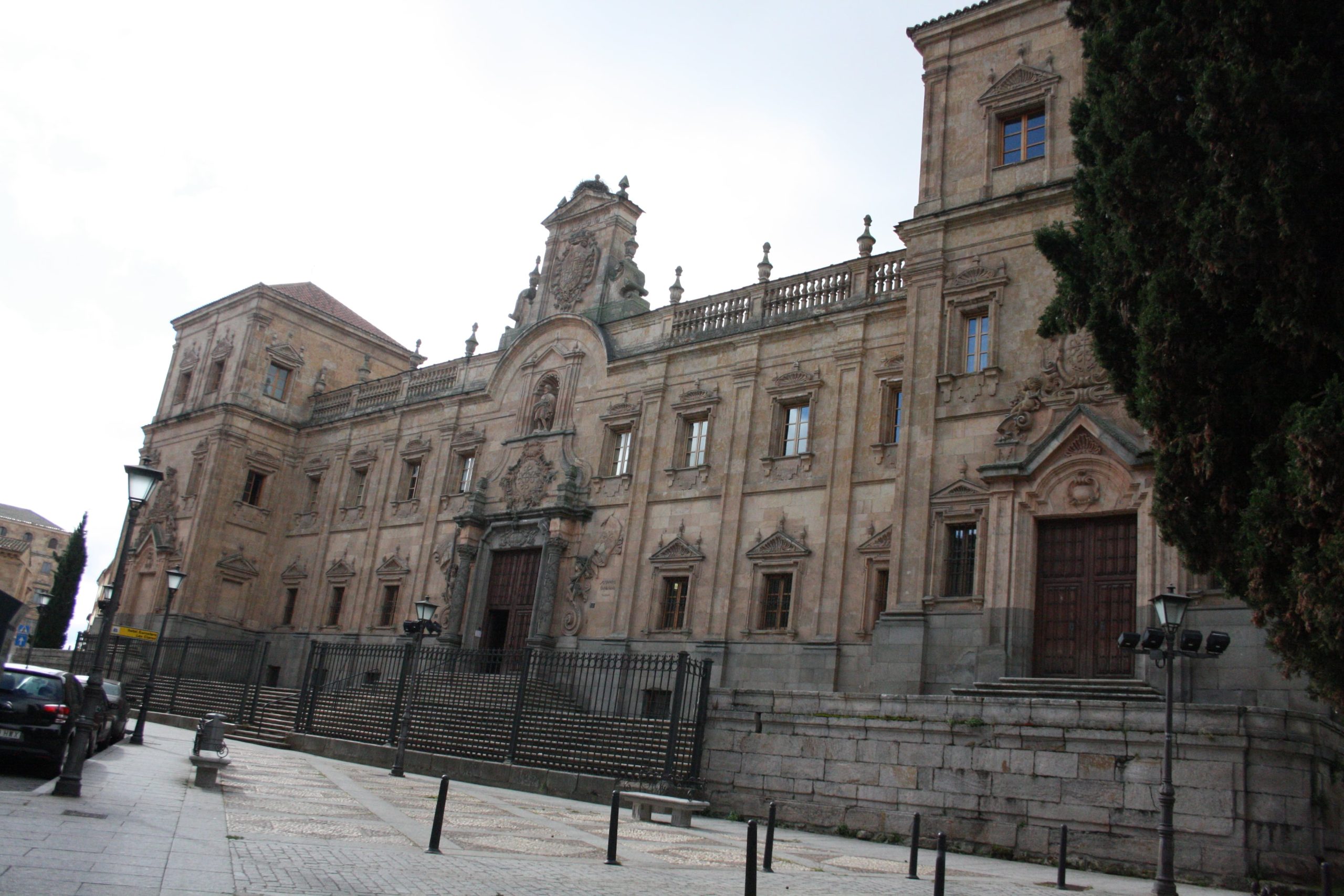
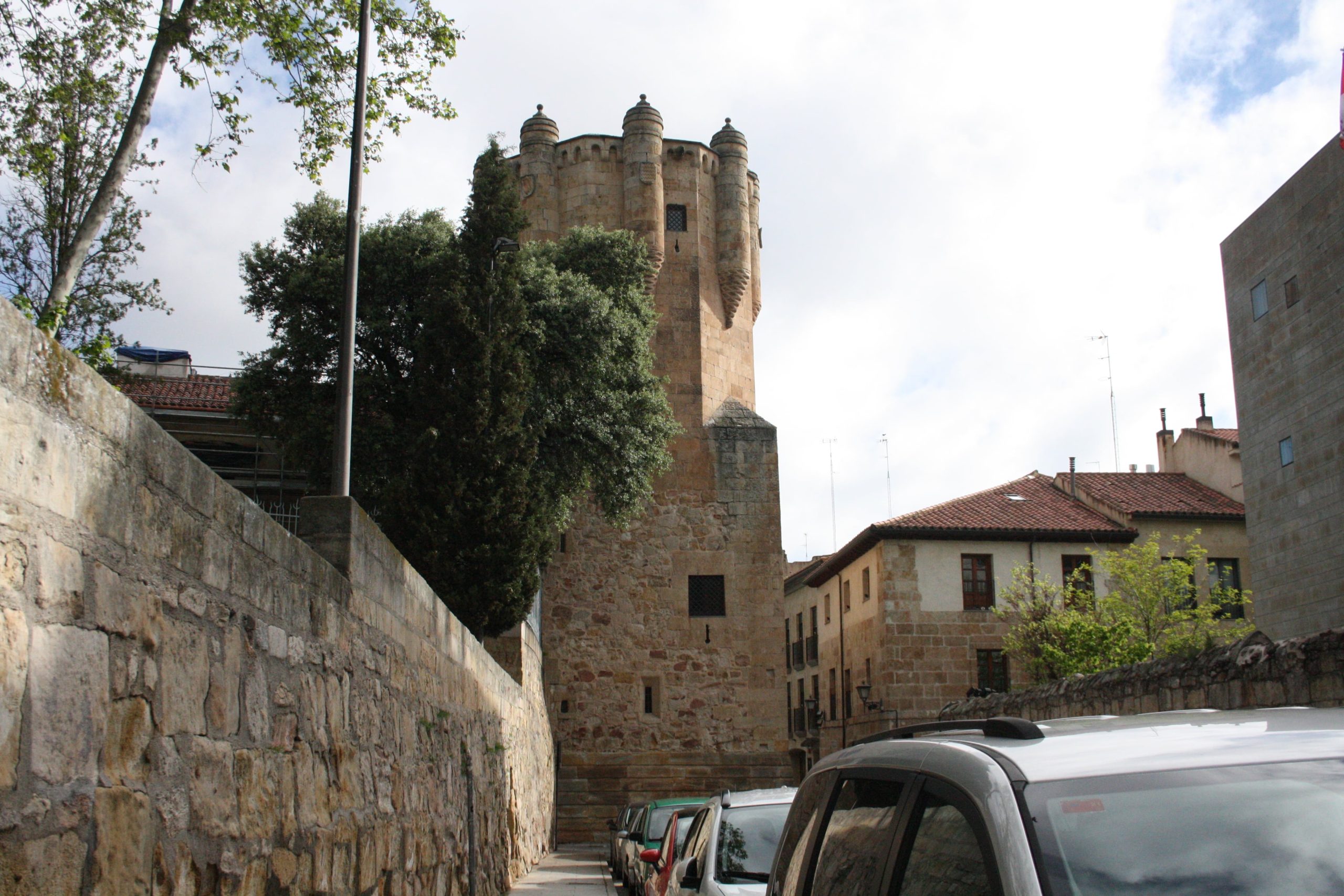
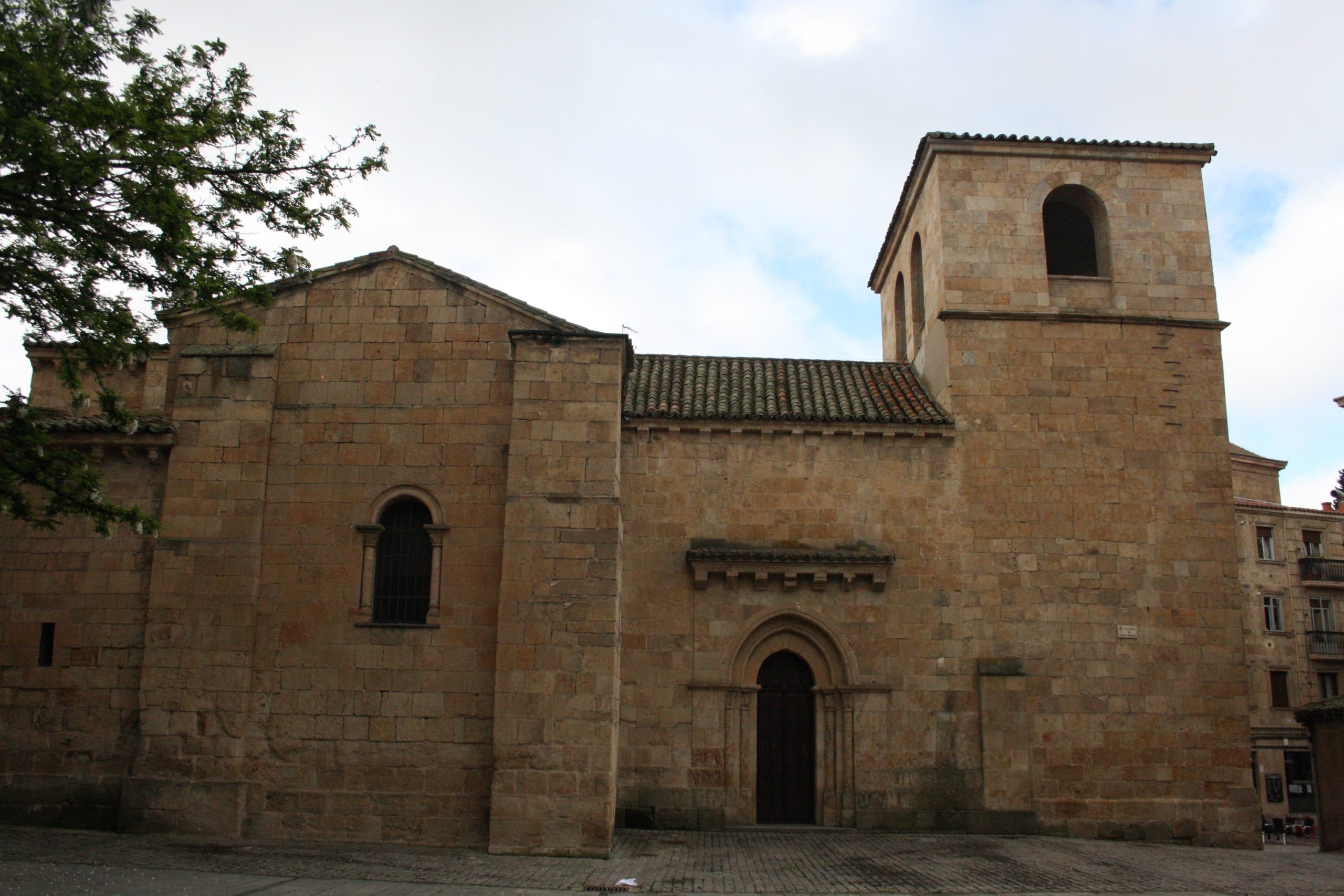
Espacio para tu evento en Salamanca
Ponte en contacto con el Palacio de Congresos de Salamanca y organiza todo lo necesario para que tu evento sea todo un éxito.
¡Te esperamos también en nuestras redes sociales @palaciodecongresossalamanca!

